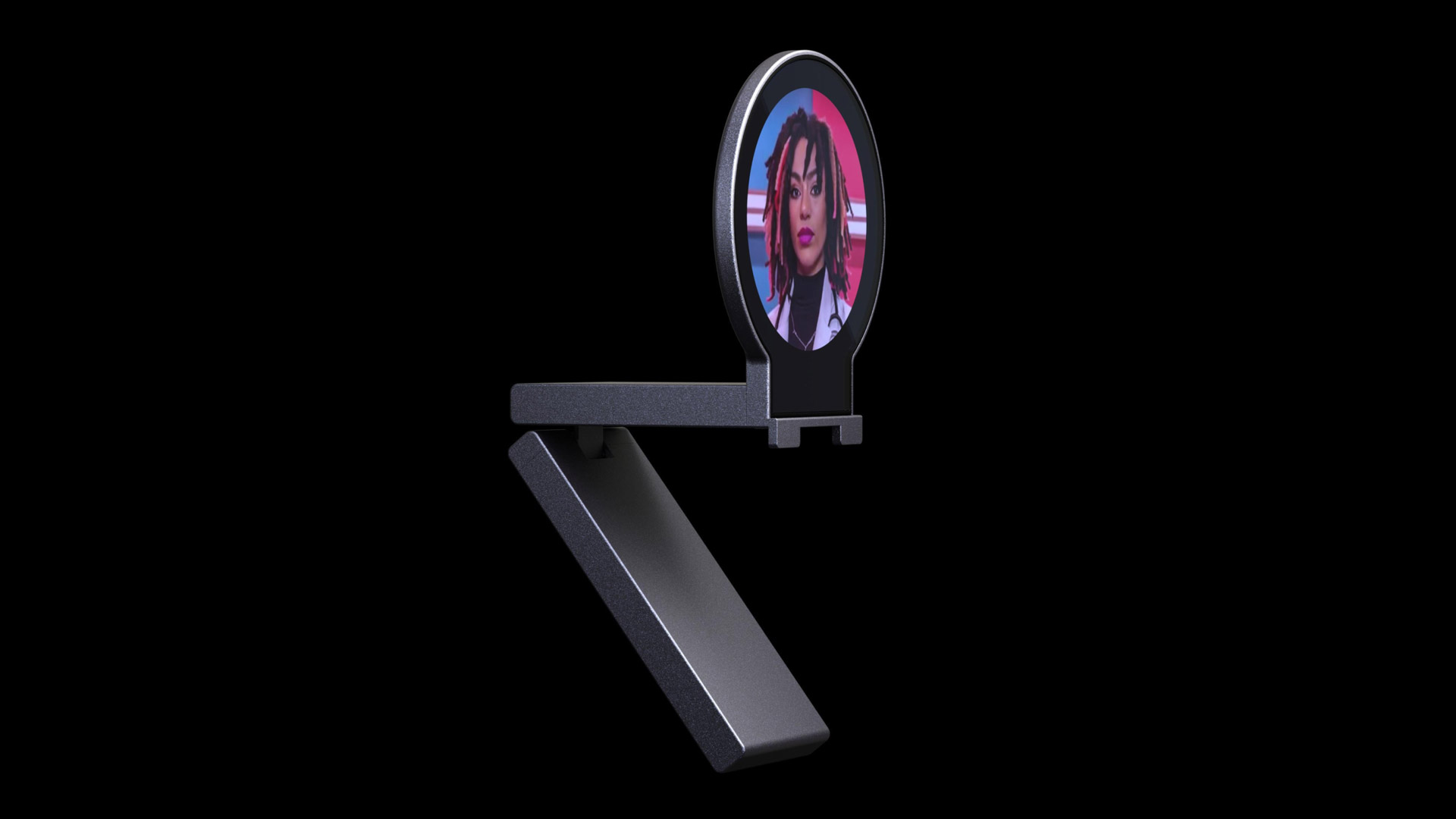- Napster returns as an artificial intelligence device company
- Create your own AI team
- Work with them directly through your MacBook
Imagine a coworker or peer looking at you from just above your MacBook screen, always ready with a contextual response, guidance, and even emotional support. You probably wouldn’t be thinking, “Oh, right, that’s Napster,” but starting today, maybe you should.
It’s been a while since many of us have thought about the now 26-year-old company that started as a music-sharing service before being virtually wiped out by litigation. The brand, however, lives on in a newly relevant form thanks to its acquisition by Infinite Reality a few years ago.
Now the company (which rebranded as Napster) is introducing Napster View, a hardware/software package that brings agent AI to your MacBook desktop (with M1 or higher).
The hardware, a holographic screen that attaches to the top of the screen (connecting via cable), serves to display a huge library of AI agents (about 15,000 of them), all with different appearances, personalities and, most importantly, skills (this includes designers, wellness guides, creative gurus and even a chief of staff).
The holographic image, which runs on the MacBook’s Apple Silicon (there is no Windows version available at this time), appears to look you in the eye and, with your permission, can see what’s on your screen and help you. You can also use your system’s camera to see, for example, what you’re wearing (or planning to wear), and then your smiling agent will offer you, hopefully, helpful fashion tips.
The Napster View software (Napster 26 platform) may also be completely desktop-based, but Napster representatives told us that it’s beneficial to not take up screen space just to host agent AI.
Napter View Agents on Standby

In a live demo, I saw how Napster agents helped with Photoshop work and even creating a business plan outline. However, in the latter case, the agent did not simply create the document. He insisted that now was not the right time because the writing would be based on assumptions. We’re told this is a feature, not a bug. Napster wants these agents to be helpful, and that may mean being more critical and offering real feedback.
Behind these agents are a variety of partner models such as Microsoft, OpenAI, and Google’s Gemini 2.5 model. Agents seem to change models depending on the tasks.
Napster also partnered with Eleven Labs, which could be responsible for the overly polished look of its team of agents.
However, Napster View goes further and can guide you to create a digital twin that can appear on other users’ Napster View hardware (or desktop). You can chat instead, gathering information that you can read as a summary later in an email.
Some things seemed a little creepy: that face staring at you right above the screen and instantly knowing what you were working on, for example. Still, I could also see how useful it could be, especially when you don’t know how to make something work in Photoshop or if you can’t analyze the data coming out of your analysis system.
I saw a lot of this in action and was impressed.
there is still music

Music is still, in some ways, part of Napster’s core DNA.
We used one of the agents, Nyx, an AI R&B singer and songwriter, to talk about concerns about AI and then let him create a couple of songs about it. I heard Nyx “sing” a catchy tune that included the lyrics: “AI takes jobs…”
You can also, if you wish, use your digital twin to create a song, although I don’t know why you would do that.
These agents seem capable of almost any task, but Napster told us that if there’s a situation where an agent can’t help you, they instantly create a new one to fill that blank. In a somewhat strange footnote, these agents are designed as fully realized people who continue to post and create content that appears in their own feeds. At one point, we saw Nyx in a bikini selfie photo.
Another quirk I noticed is that the AI agent’s speech didn’t always appear in sync with the face animations.
Napster View starts at $99 and there will be service fees to access the team of AI agents.
In a way, I like how Naspter View links the AI to your desktop and your main intentions. It’s certainly smarter and less obnoxious than an AI-enabled wearable. As for how much prosumers will want to interact with these agents, well, I guess it depends on how useful they really are.
Follow TechRadar on Google News and add us as a preferred source to receive news, reviews and opinions from our experts in your feeds. Be sure to click the Follow button!
And of course you can also follow TechRadar on TikTok for news, reviews, unboxings in video form and receive regular updates from us on WhatsApp also.



